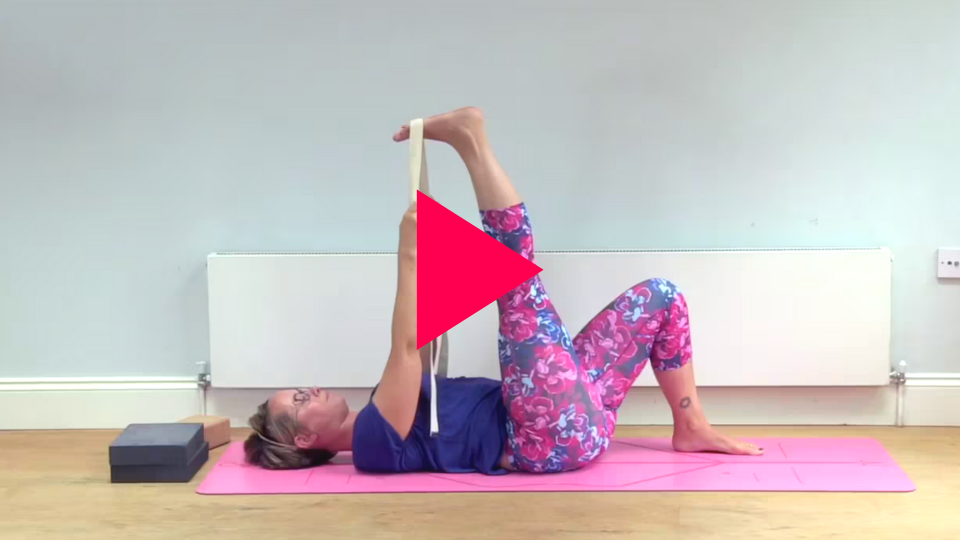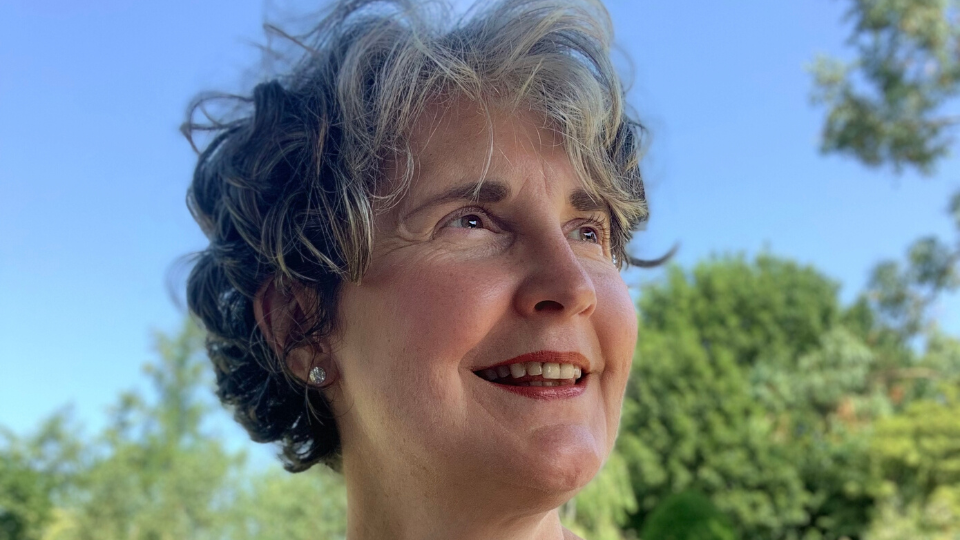
When it comes to balance, yoga has much to teach us. Helen Krag explores ways in which we can bring physical, mental and emotional aspects of ourselves into balance.
‘Balance’ shows up in our vocabulary to describe a present and desired state. We talk about ‘feeling de-stabilised’ and the need to ‘get back on an even keel’. This article on balance yoga looks at how yoga helps us to practice a lot more than just physical balance.
The Oxford English Dictionary says balance is ‘An even distribution of weight enabling someone to remain upright and steady’. It can also be ‘mental or emotional stability: the way to some kind of peace and personal balance.’
One thing is for sure – when we feel out of kilter, it can seriously disrupt the ease with which we can thrive day-to-day and experience the joy in life! When it comes to balance, yoga has much to teach us. In this article we will explore ways in which we can bring physical, mental and emotional aspects of ourselves into balance.
PHYSICAL BALANCE: YOGA POSES
An obvious aspect of balance in yoga is poses that call on us to balance physically on a part of the body. Vrksasana (Tree Pose) is a classic posture where we stand on each foot in turn.

Fine tune your alignment and find more ease in tree pose in this short tutorial with Catherine Annis.
As you practise Tree Pose, notice what goes on for you. Does it feel the same on both sides, or is there, for example, more ease on one side than another? We like to think of our bodies as symmetrical, but we may not recognise our face if the left side was an exact mirror image of the right! Similarly, the organs within our body are by no means symmetrical. For example, the liver is the heaviest organ in the abdomen and can subtly weigh down the right side of the body in a different way from the left. Left or right handed dominance can mean that our muscles and soft tissue behave in different ways on different sides of the body.
Whilst it can help us achieve better balance, yoga also has an important role in helping us to notice these differences in ourselves. Some of the most valuable information about what’s going can be found in the moments we struggle to balance.
Have you ever got frustrated when you can’t seem to maintain your balance in poses such as Ardha Chandrasana (Half Moon)? In this tutorial we discover the importance of establishing a firm foundation and the value of coming to the pose with a calm demeanour. Our mental and emotional state can be a big determinant of how balanced we will be physically.
Read more about yoga for stress and anxiety in this complete guide
FINDING THE MIDDLE GROUND
We live in a world that constantly pits ‘good’ against ‘bad’. The Buddhist texts talk about how we are ‘blown about’ by eight worldly winds. These winds are, gain and loss; success and failure; praise and blame; pleasure and pain. When we are feeling out of balance it can be tempting to take drastic action to try and yank the scales back to where we think they should be. This often means dispensing with the ‘bad’ and seizing the ‘good’. However, the Bhagavad Gita, one of the ancient texts from which our understanding of yoga is derived, urges us to relinquish attachment. We are encouraged to remain even, calm and composed in all situations – including those we find challenging.
“Situated in yoga, perform your duties whilst giving up all attachments. Remain equal in success and failure for such equanimity is what is meant by yoga”.
Bhagavad Gita 2.48
Buddhism also picks up on the idea that when we cultivate equanimity, we cultivate a state of being even-minded and calm.

This gently flowing class, Yoga for Equanimity, with Mimi Kuo-Deemer combines yoga and qigong to explore how we can better balance heart and mind.
BALANCE YOGA AND QIGONG: CLASSES TO HELP RESTORE EQUILIBRIUM
Qigong is a traditional component of Chinese Medicine (TCM). The word derives from ‘qi’ meaning ‘subtle breath’ or ‘vital energy’. ‘Gong’ translates to ‘skill cultivated through steady practice’. A consistent practice helps to build and maintain balance and strength.
Mimi Kuo-Deemer combines qigong with yoga in this collection of three gentle and nourishing classes. They bring together the physical, energetic and emotional aspects of our being to help us create harmony within ourselves.

Qigong Balance Series 1: Structural Balance explores aspects of the feet, legs and hands that enhance balance. Consider it a balance 101!

Qigong Balance Series 2: Energetic Balance focuses on the concept of zhong ding (central equilibrium). The class helps tap into energy flow and enable more effective self-regulation of energy levels throughout the day.

Qigong Balance Series 3: Emotional Balance uses movements, mudras and visualisations related to emotions via the Chinese organ and meridian systems.
In addition, do try this elemental qigong practice, Qigong and Restorative Yoga: Finding Balance. This class seeks to balance the Chinese Five Elements of wood, fire, earth, metal and water and concludes with some quieting restorative poses.
Curious to learn more about Qigong? Read this blog on Qigong for Beginners
A BALANCED YOGA PRACTICE
What are the key ingredients for a balanced yoga practice? One concept that often arises is the idea of maintaining mobility and flexibility through the spine. Our spine is at our very core. It resides between the Chinese yin and yang energy points at the base of the pelvic floor and the crown of the head respectively. A healthy spine contributes to greater balance and wellbeing. So, one way to balance our yoga practise is to mobilise the spine in all directions.
Everyday Essentials with Lucy McCarthy does just that – to leave you feeling strong and uplifted.

Rebalance and Restore with Kate Walker will help to reset your spine after work or travel.

BALANCE: YOGA BREATHWORK
The pranayama Nadi Shodhana is also known as alternative nostril breathing. Nadi is a Sanskrit word for a channel of the subtle body through which life force energy flows. There are said to be 72,000 nadis in the body and two of the primary ones terminate in the nostrils, one in the left and one in the right. Shodhana means cleansing or purifying, so alternative nostril breathing clears the channels both physically and energetically so that our energy can be balanced. You can give it a go here:
When stressful times have knocked us off centre, a gentle approach may be required to temper emotions. Rebalance Yourself with Joo Teoh combines qigong and breathwork with poses that can even be done in a chair.
THE POWER OF GRATITUDE FOR BALANCE
A guaranteed way to knock us off balance is to constantly strive for what we don’t have. The practice of gratitude helps us to appreciate the here and now. This in turn can help restore us to our centre.

This short gratitude practice and meditation with Andrea Kwiatkowski helps us get back to basics and consider what is really important to us. It reminds us not to sweat the small stuff that can derail us.
Above all, practising gratitude allows us to develop appreciative acceptance for the here and now.
Read more in Yoga for Stress and Anxiety: A Complete Guide
‘BALANCE YOGA’ TIPS AND RESOURCES
More ideas to help strike a more effective balance:
- In yoga asana we often aim to repeat poses for a similar length of time on each side. However, if you have noticed you are stronger, or more flexible, on one side than the other, how about experimenting with the opposite side a little more to even things up?
- It is common to choose yoga classes or do poses that we like best. When was the last time you challenged yourself to do some of your least favourite ones? How might that help you achieve greater balance?
- Or listen to a podcast where Joo chats with Kat Farrants on cultivating balance, intention and joy every day.
- Read more about balance in yoga:
- Finding Balance – Joo Teoh
- Moving into Balance – Kat Farrants
- 6 Tips for Keeping the Balance – Jennifer Scott
- How Yoga can Help you Balance – Melisa Thomas
- Balance, Strength & Mobility – Clive Fogelman
CONCLUSION
When we are truly in balance we may feel physically grounded, level-headed and emotionally stable. Of course, it is perfectly normal for these things NOT to be in harmony for us. Balance doesn’t mean we are never sick or we never experience negative emotions. Rather, having a sense of balance enables us to get back up on our feet more quickly and with greater ease.
The variety of ideas and practices shared here can help raise awareness of what’s going on for us, so we can acknowledge and accept where we are at. Acknowledgement and acceptance are two key first steps to take before we gently start to nudge the scales back towards harmony and balance.

Author: Helen Krag. Helen is a health and wellness enthusiast; observer of human behavioural change; yoga teacher trainee; passionate traveller; and lover of the outdoors.








Leave a Reply